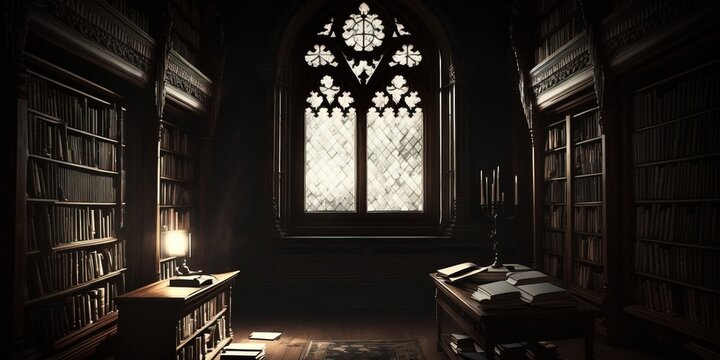
FAQ About Gothic Literature
Gothic Literature
2 years ago | gizem
How does Gothic Literature reflect societal fears and taboos?
Gothic Literature has a long history of reflecting societal fears and taboos by using the elements of horror, the supernatural, and the uncanny to explore and amplify the anxieties and forbidden subjects of its time. Here's how Gothic Literature reflects societal fears and taboos:
- Sexuality and Repression: Many Gothic novels, including Bram Stoker's "Dracula," explore themes of repressed sexuality and desire. In Victorian society, discussing sexuality openly was taboo, and the vampire, with its seductive and predatory nature, became a metaphor for sexual transgression.
- Social Class and Injustice: Gothic Literature often delves into the disparities between social classes and the injustices faced by the marginalized. Works like Charlotte Brontë's "Jane Eyre" and Emily Brontë's "Wuthering Heights" depict the struggles of individuals trapped in oppressive social hierarchies.
- Mental Illness and Madness: The theme of madness is a recurring motif in Gothic literature. In an era when mental illness was often misunderstood or stigmatized, Gothic narratives like Charlotte Perkins Gilman's "The Yellow Wallpaper" shed light on the psychological distress faced by women and the horrors of being confined or institutionalized.
- Science and Morality: With the advent of scientific advancements, Gothic Literature began to explore the ethical and moral dilemmas posed by scientific experimentation. Mary Shelley's "Frankenstein" questions the boundaries of science and the consequences of playing god.
- Fear of the Other: Gothic stories often depict characters who are perceived as different or alien, reflecting societal fears of the "other." These characters, such as the "madwoman in the attic" in "Jane Eyre," serve as a commentary on issues of race, ethnicity, and cultural differences.
- Religious Anxiety: Gothic Literature frequently engages with religious themes and anxieties. It raises questions about the existence of the divine, the nature of good and evil, and the consequences of violating religious taboos.
- Female Agency and Independence: Many Gothic heroines, like Jane Eyre and Mina Harker, challenge traditional gender roles by seeking independence and agency. These characters confront societal fears of women breaking free from prescribed roles and expectations.
- Fear of the Supernatural: Gothic Literature capitalizes on humanity's fear of the supernatural and the unknown. Whether through ghosts, vampires, or curses, these stories exploit our primal fears of the unexplained and the uncontrollable.
- Fear of Loss and Death: Gothic literature often deals with themes of mortality and the fear of losing loved ones. This reflects the universal fear of death and the grief and despair that accompany it.
- Taboos Surrounding Marriage and Relationships: Gothic literature frequently explores forbidden or unconventional relationships, such as incestuous love affairs or secret marriages. These themes challenge societal norms and restrictions.
- Fear of Isolation and Alienation: Many Gothic characters are isolated or estranged from society, reflecting the fear of loneliness and alienation. This theme resonates with individuals who may feel disconnected from their communities.
- Fear of the Past: The past often holds dark secrets and unresolved conflicts in Gothic literature. Characters' encounters with the past can lead to horrifying revelations and confrontations with historical traumas.
